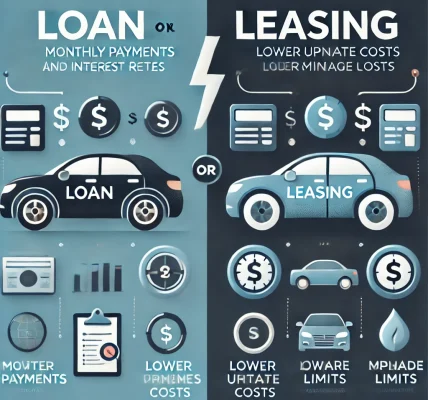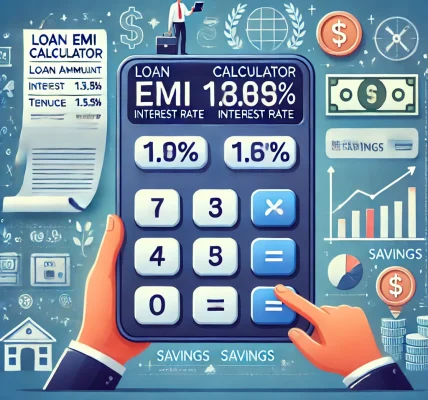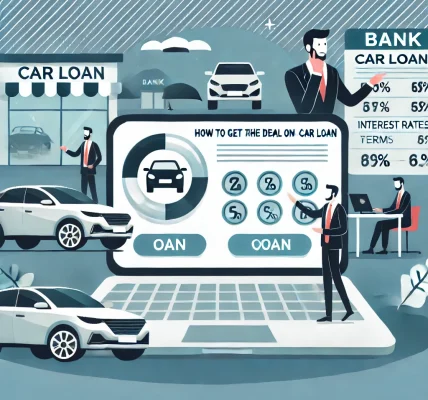When applying for a loan, one of the key factors that financial institutions consider is the applicant’s source of income. Lenders categorize applicants into two primary groups: salaried and self-employed individuals. Each group has different risk factors, income stability, and financial documentation, which significantly impact loan policies and approval terms. In this article, we will explore how loan policies differ for salaried and self-employed individuals, the requirements for each, and how to improve eligibility.
1. Understanding the Difference Between Salaried and Self-Employed Individuals
Salaried Individuals
Salaried individuals work under an employer and receive a fixed monthly salary. Their income is stable, predictable, and verifiable through salary slips and bank statements. This stability makes lenders view them as low-risk borrowers.
Self-Employed Individuals
Self-employed individuals include business owners, freelancers, consultants, and professionals such as doctors, lawyers, and artists. Their income varies based on market conditions, business performance, and client payments. Due to the fluctuating nature of their earnings, lenders assess them differently and may impose stricter lending policies.
2. Loan Eligibility Criteria: Salaried vs. Self-Employed
Salaried Individuals
- Income Proof: Salary slips for the last 3-6 months
- Bank Statements: Salary credited bank statements for the last 6 months
- Employment Proof: Offer letter, employment certificate, or Form 16
- Credit Score Requirement: Typically 650+ for better approval chances
- Loan Amount & Interest Rates: Higher loan amounts with lower interest rates due to stable income
- Repayment Terms: Flexible repayment options and tenure up to 30 years for home loans
Self-Employed Individuals
- Income Proof: Income Tax Returns (ITR) for the last 2-3 years
- Bank Statements: Personal and business account statements for 12-24 months
- Business Stability Proof: Business registration documents, GST returns, profit & loss statements
- Credit Score Requirement: Generally 700+ preferred for unsecured loans
- Loan Amount & Interest Rates: Lower loan amounts and higher interest rates due to income instability
- Repayment Terms: Stricter repayment conditions, with lenders demanding collateral in some cases
3. Interest Rates: Who Gets Better Deals?
Interest rates for salaried individuals are often lower because lenders consider their income stable. On the other hand, self-employed borrowers face higher interest rates as a risk-mitigation measure by lenders. However, a strong financial history and good credit score can help self-employed applicants negotiate better terms.
Example of Interest Rate Comparison
| Loan Type | Salaried Interest Rate | Self-Employed Interest Rate |
|---|---|---|
| Home Loan | 7.5% – 9% | 8% – 10.5% |
| Personal Loan | 10% – 14% | 12% – 18% |
| Business Loan | Not Applicable | 12% – 22% |
4. Loan Documentation: Salaried vs. Self-Employed
The documentation process for salaried individuals is relatively simple. They usually need to submit identity proof, address proof, salary slips, and bank statements. In contrast, self-employed applicants must provide additional documents, including business financials, ITRs, and stability proof, making the process more complex.
5. Challenges Faced by Self-Employed Borrowers
- Income Fluctuations: Irregular earnings make it harder to predict loan repayment capacity.
- Higher Interest Rates: Lenders compensate for risk by charging higher rates.
- Stricter Documentation: Extensive paperwork requirements may delay approvals.
- Collateral Demand: Some lenders may require security to approve high loan amounts.
6. How Self-Employed Borrowers Can Improve Loan Approval Chances
- Maintain a Strong Credit Score: Pay debts on time and keep a low credit utilization ratio.
- Ensure Stable Business Operations: A consistent income history over 2-3 years improves credibility.
- File Regular Income Tax Returns: Regular ITR filing helps in showcasing financial stability.
- Keep Business and Personal Finances Separate: Having dedicated accounts for business and personal expenses reflects professionalism.
- Opt for a Joint Loan: Applying with a salaried co-applicant can improve approval chances.
7. Which Loan Type is Easier to Get?
| Loan Type | Easier for Salaried? | Easier for Self-Employed? |
| Personal Loan | ✅ Yes | ❌ No (Strict eligibility) |
| Home Loan | ✅ Yes | ❌ No (Higher down payment required) |
| Business Loan | ❌ No (Not applicable) | ✅ Yes (Designed for business owners) |
| Car Loan | ✅ Yes | ✅ Yes (With high credit score) |
8. Conclusion
Loan policies differ significantly for salaried and self-employed individuals due to income stability, risk factors, and documentation requirements. Salaried individuals benefit from lower interest rates, easier approval, and fewer documentation needs, while self-employed borrowers may face stricter terms and higher rates. However, self-employed applicants can improve their eligibility by maintaining strong financial records and creditworthiness.
When applying for a loan, it is essential to understand the lender’s policies and prepare accordingly. Consulting with financial experts and comparing multiple loan offers can help in making informed decisions that suit your financial profile.



